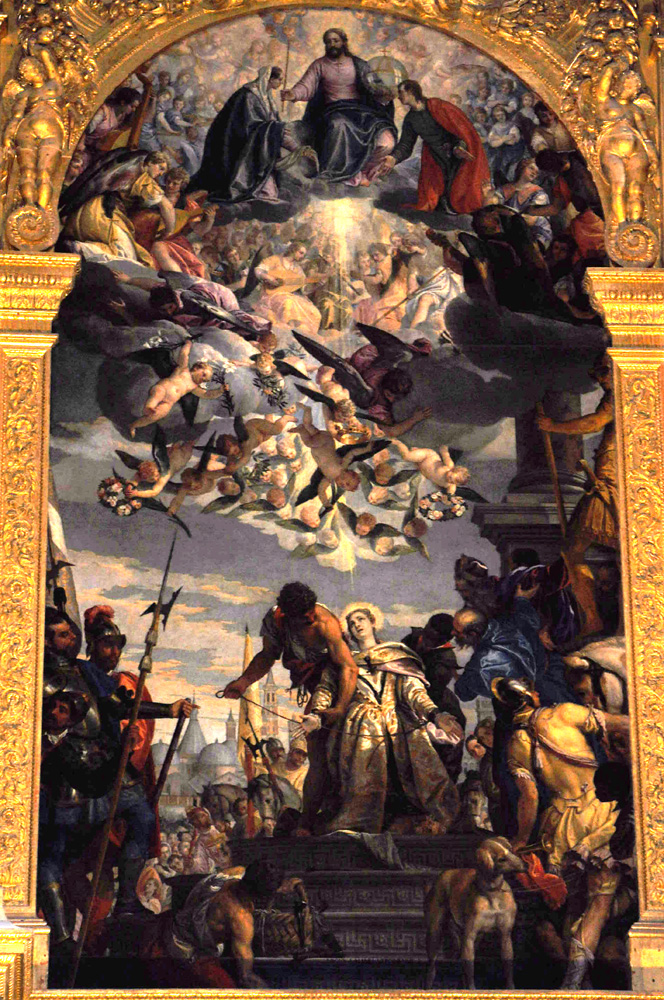
Paolo Veronese
The Martyrdom of St. Justina
1576
Oil on canvas
High altar, Abbey of St. Justina, Padua, Italy
Veronese plays an eloquent game with space and time by putting the Basilica of St. Anthony in the background across a patch of empty ground. In the artist's time and ever since, that ground has been occupied by the Abbey of St. Justina, where this painting hangs and which overlooks the Prato della Valle, where Justina was believed to have been put to death.
The prevalence of armed soldiers in the lower register reflects the details of Justina's legend. She was arrested by soldiers and taken to the Prato, which was then known as the Campus Martius or "Field of Mars," the god of war. Further, it was Mars in particular that the Emperor ordered her to worship (Acta Sanctorum, October vol. 3, 825).
The man behind Justina appears to be an African, like the executioner in
another Veronese
on the same subject. That image showed the actual piercing of Justina's body by the sword, but here the artist has chosen the time that immediately followed, when "while all stood by, for an hour she lifted her eyes to Heaven and held her palms toward the sky and prayed thus to the Lord: 'Lord Jesus Christ, take my soul into your rest…'" (ibid., my translation). In the painting Justina does indeed turn her eyes and palms heavenward, and the executioners appear to have finished their work, the one at her side removing her chains and the one behind perhaps pulling the sword back out of her body.
In response to Justina's prayer and Christ's reply, a throng of putti in the middle register bring symbols of the martyr's victory: branches of palm and laurel, a crown of flowers, and another crown of gold. Above them angels and saints surround a Deësis-like grouping in which Christ holds a sceptre and a large mappa mundi, symbols of his universal authority, while the Virgin Mary and St. John the Evangelist present their supplications.
For whom are they supplicating? They gesture not only downward to Justina, who will be welcomed presently into the heavenly host, but outward from the high altar to the congregation in the abbey.
View this image in full resolution.
Read more about images of St. Justina of Padua.
Photographed at the site by Richard Stracke, shared under Attribution-NonCommercial-ShareAlike license.